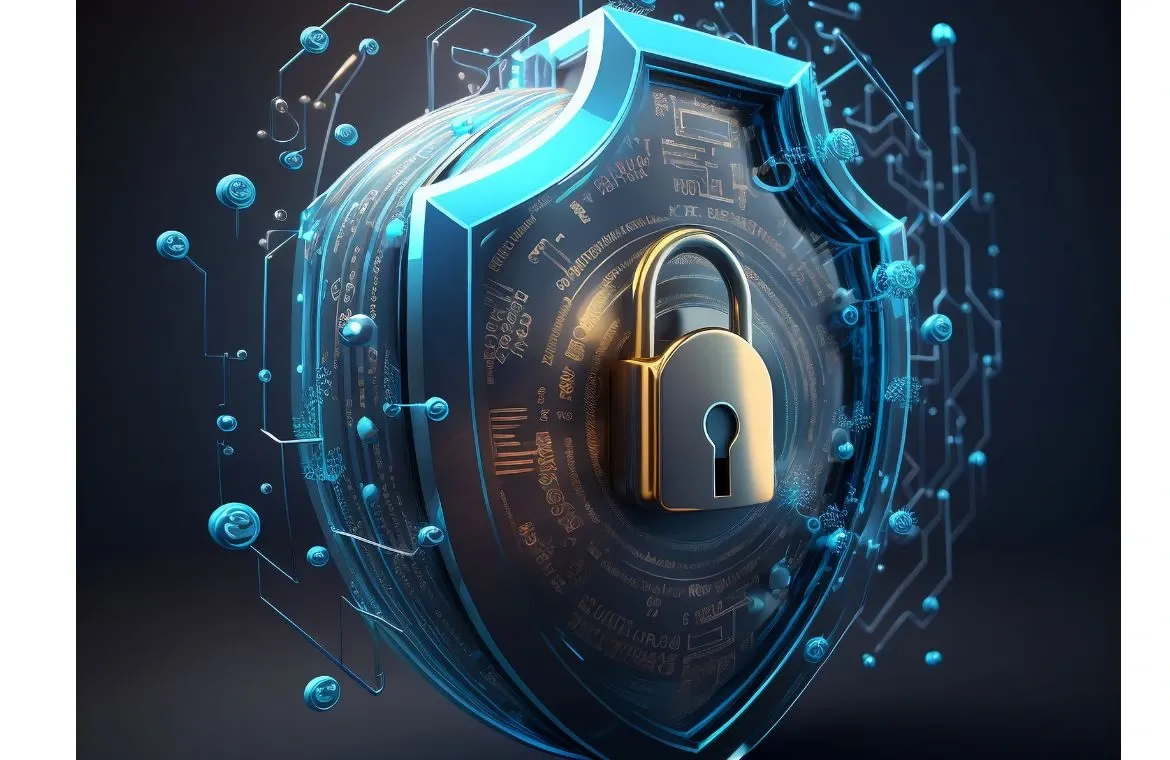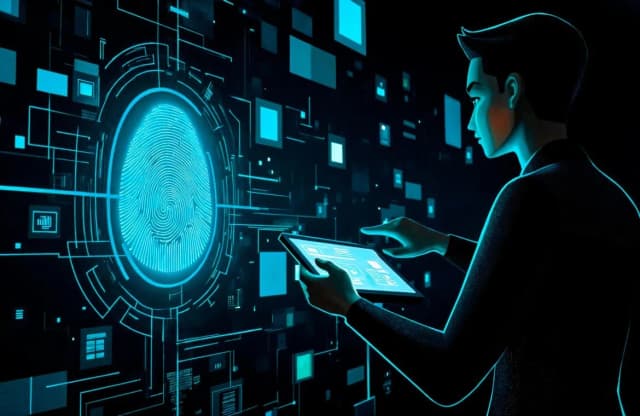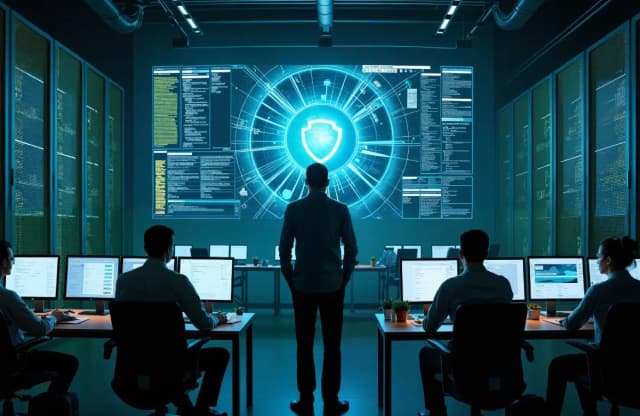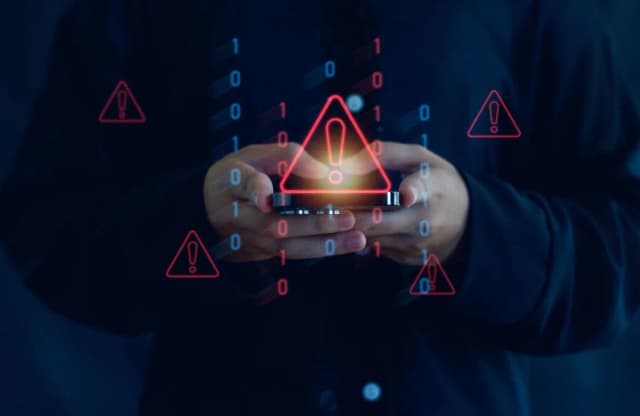What is Cyber Security? The Truth About Online Safety

Cybersecurity works like a multi-layered fortress. Firewalls act as the outer gates, antivirus software is the guards patrolling inside, and encryption is the lock that only the right keys can open. Just like cities invest in CCTV and police for safety, companies and individuals now invest in cybersecurity tools and professionals to protect data, the new currency of trust.
In this blog, we’ll break down what cybersecurity truly is, why it matters, and how it protects us in ways we often overlook. In a digital world, safety isn't a feature; it's a necessity.
What is Cyber Security all about?
Cyber Security is the practice and skill of protecting networks, devices, and data from unauthorised access or criminal use. Your computer systems and electronic data stay protected through Cyber Security that maintains information's confidentiality, integrity, and availability.
Cyber Security uses specialised tools and practices that detect and remove harmful software while helping you spot and avoid online scams. Your personal information, bank details, files, and online activity remain safe from theft, damage, or misuse.
How Cyber Security Works in Everyday Life?
Your daily activities rely heavily on Cyber Security running in the background. Technology powers everything from email and smartphone communication to navigation systems, online shopping, and medical records.
Cyber Security works best when three complementary elements combine: people, processes, and technology. Users should be aware of basic data protection principles, such as creating strong passwords, being cautious of suspicious email attachments, and regularly backing up data.
Good Cyber Security habits will give you private data and a safe online experience in all your digital interactions.
Why is Cyber Security important?
Digital theft now occurs more frequently than physical theft, underscoring the need for reliable security measures. Yes, it is one of the most serious economic and national security challenges countries face today.
Protecting personal and business data
Bad Cyber Security leads to several problems:
- Data breaches that expose private information
- Heavy financial losses and legal penalties
- Damage to reputation and customer trust
Companies see Cyber Security as a crucial part of managing risks, especially cyber risks. A breach can result in regulatory fines, system downtime, legal issues, and long-term damage to a company's reputation.
How Cyber attacks affect society
Cyberattacks go beyond just the financial losses or data breaches, they sometimes also break people and make them not trust anyone, always be anxious and affect them mentally. It impacts society in many ways:
- Public Safety Risk: Trains and metro systems stopped functioning, creating panic among commuters.
- Healthcare Disruption: During the COVID-19 pandemic, hospitals had to rely on emergency power, which risked compromising patient lives.
- Economic Losses: Power-dependent businesses suffered significant losses due to the halt in operations.
- Trust Deficit: The public lost trust in the safety of digital infrastructure.
Cyberattacks can paralyse essential services, disrupt daily life, and even pose a threat to national security.
Different types of Cyber Security
Modern Cyber Security includes several specialised domains that protect different aspects of digital systems. Organisations need to understand these domains to develop detailed security strategies.
1. Network security
Network security protects infrastructure from unauthorised access and attacks. It has firewalls that filter traffic based on predefined rules, intrusion prevention systems to detect and block threats, and virtual private networks for secure remote connections.
2. Application Security
Application security builds apps that can withstand cyber threats. This work includes fixing code vulnerabilities and adding protective measures during development. Basic security controls verify authentication, implement encryption, and restrict access.
3. Cloud security
Cloud security protects cloud-based assets, including applications, data, and infrastructure. Cloud environments work differently from traditional setups - providers secure the infrastructure while organisations protect their data. Best practices include secure cloud identity management, proper key management, network segmentation, and data protection.
4. Endpoint security
Endpoint security defends network-connected devices, including computers, smartphones, and IoT devices. These solutions fight cyber threats through antivirus features, data encryption, intrusion prevention, and behavioural analysis.
5. Information security
Information security is built on three core principles, known as the CIA triad: confidentiality, integrity, and availability. Confidentiality ensures that sensitive information is accessible only to authorised users through access controls and encryption.
Integrity maintains data accuracy and blocks unauthorised changes using checksums and digital signatures. Availability ensures systems stay accessible when needed through redundancy and disaster recovery planning.
6. IoT and operational technology security
IoT security defends internet-connected devices, while operational technology (OT) security protects industrial control systems and equipment. Each domain faces unique challenges. OT security prioritises system availability and safety for physical operations. IoT security focuses on data integrity and confidentiality across connected devices.
Cyber Security threats and strategies to deal with them
Modern organisations must deal with cyber threats that are continually evolving and require effective defence strategies. A sound Cyber Security system needs you to understand these threats and set up the right defences.
Phishing and social engineering
Criminals use social engineering attacks to exploit human psychology instead of finding technical weak points. They send deceptive messages to trick people into sharing sensitive data or downloading malware.
Ransomware and malware
A ransomware attack happens every 14 seconds. These attacks cost businesses a hefty amount of money each year. Attackers employ a two-step approach: they first encrypt files or lock devices and then demand ransom money to provide the decryption keys.
Insider threats
Individuals with legitimate system access can pose insider threats. These threats manifest in various ways, such as malicious insiders who act intentionally, careless mistakes, and compromised insider accounts.
Zero trust architecture
Zero-trust security eliminates the traditional "castle and moat" model. It creates a system that trusts no one, whatever their location. Users connect to applications only after constant identity and context checks. This system prevents threats from moving across networks, ensures data remains encrypted during transfer, and enhances system privacy.
Multi-factor authentication
MFA requires users to prove their identity in multiple ways beyond passwords. You need something you know (a password), something you have (a device), and something you are (biometric). This layered security works really well. Your organisation should focus on adding phishing-resistant MFA, especially FIDO/WebAuthn authentication.
Security awareness training
Human error causes many security problems, so good training programmes matter a lot. Your team needs to learn how to identify threats, recognise vulnerabilities, and adhere to security best practices.
The best training utilises various formats, real-life scenarios, and practice exercises, such as phishing tests. Good security education turns employees from potential risks into valuable defenders of your system.
Future Trends in Cyber Security in 2025
Organisations must stay ahead of sophisticated threats as Cyber Security changes faster.
1. AI and machine learning in threat detection
AI continues to reshape threat detection by analysing huge datasets at unprecedented speeds. Machine learning algorithms will identify suspicious patterns, malicious code signatures, and behavioural anomalies that indicate potential breaches.
2. Zero trust becoming the norm
Zero-trust architecture has evolved from theory to mainstream adoption. This approach assumes breach and checks each request, whatever its origin, based on "never trust, always verify".
A successful zero-trust setup needs:
- Continuous authentication and authorisation.
- Micro-segmentation of networks.
- Least privilege access controls.
- Immediate monitoring and analytics.
3. Cloud-native security solutions
Cloud-native security solutions will become basic building blocks as more workloads move to cloud environments. These specialised approaches work with containerised applications, microservices architectures, and dynamic infrastructure.
Busting the Common Myths
Cyber Security misconceptions create dangerous security gaps that criminals are happy to exploit. Let's get into four common myths that leave organisations vulnerable to attacks.
Myth 1: Only big companies are targeted
Small business cyberattacks can be devastating due to 'increases in attack automation and supply-chain attacks against their IT service providers'. The biggest problem is that many small businesses think they're 'too small to notice' or 'don't have data worth stealing'.
Myth 2: Antivirus is enough
Advanced evasion techniques, such as obfuscation, help malware evade traditional signature-based detection, while fileless malware leaves no footprint for antivirus software to scan. No single virus protection can be 100% effective at finding and removing all malware. That's why you need detailed security measures in place.
Myth 3: Strong passwords are foolproof
Multi-factor authentication (MFA) adds vital security layers by needing multiple verification methods, something you know, something you have, and something you are. Additionally, using password managers that generate and store unique credentials for various accounts helps reduce vulnerability.
Myth 4: Cyber Security is only IT's job
Hackers often exploit human nature through social engineering instead of technical vulnerabilities. This makes employee awareness vital. Organisations must encourage a security-conscious culture where everyone understands their role in protecting against sophisticated threats.
Conclusion
Cyber security is no longer just the domain of IT teams. Whether you're a business leader, developer, educator, or student, understanding how digital threats work and how to prevent them is essential.
"The best defence is a well-informed mind."
That’s where structured learning plays its role. An IIT Kanpur Cyber Security Course, of which can prove to be a solid foundation. It equips professionals and aspiring experts with the capabilities to identify, prevent, and effectively manage threats, thereby safeguarding your data or protecting the entire digital environment of your organisation.
The year 2025 will bring new changes to Cyber Security practices. Success requires constant watchfulness and change. You can protect your organisation's digital assets by using resilient security frameworks, closing skill gaps, and staying proactive against new threats.
Success requires constant watchfulness and adaptability, and Cyber Security thrives on continuous learning and smart strategies - your best defence in an unpredictable landscape.
Frequently Asked Questions
Q1. What is Cyber Security, and why is it important?
Cyber Security is the practice of protecting digital systems, networks, and data from unauthorised access and malicious attacks. It's crucial because cybercrime costs the global economy trillions annually, and Effective Cyber Security safeguards personal information, business data, and critical infrastructure.
Q2. How can individuals protect themselves online?
Individuals can enhance their online safety by using strong, unique passwords for each account, enabling multi-factor authentication, being cautious with email attachments and links, regularly updating software, and using reputable antivirus programmes. It's also important to be aware of common scams and phishing attempts.
Q3. What are the main types of cyber threats?
The primary cyber threats include phishing and social engineering attacks, ransomware, malware, insider threats, and advanced persistent threats (APTs). Phishing remains a top method for delivering ransomware, while insider threats can be particularly damaging due to legitimate system access.

TalentSprint
TalentSprint is a leading deep-tech education company. It partners with esteemed academic institutions and global corporations to offer advanced learning programs in deep-tech, management, and emerging technologies. Known for its high-impact programs co-created with think tanks and experts, TalentSprint blends academic expertise with practical industry experience.



